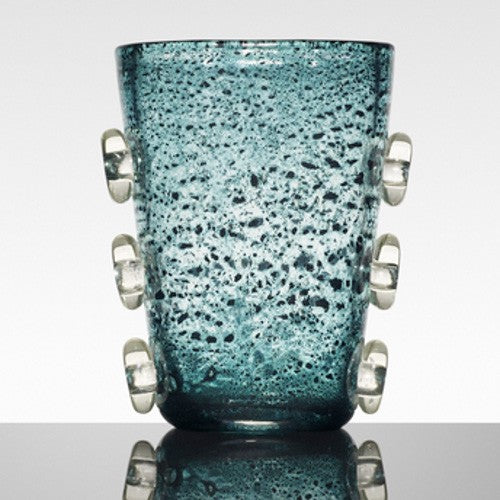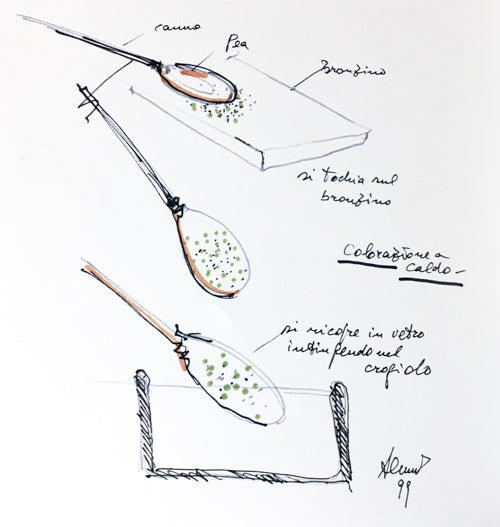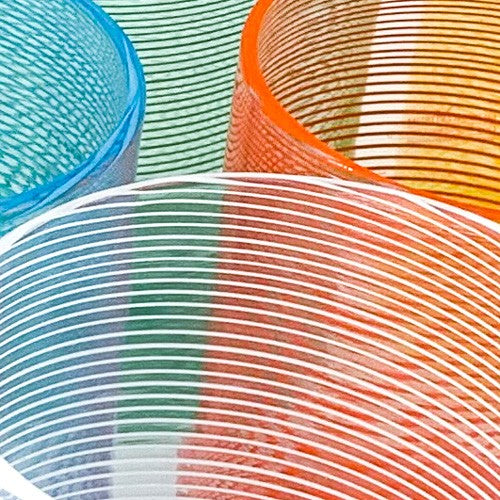This involves dipping a glowing glass bolo on salts, oxides or other elements and covering them by submerging everything with another layer of transparent molten glass.
Under the effect of heat the salts react giving rise to very suggestive colors.
Instead of salts you can also use very small fragments of colored glass (granolioli, macie).
The technique of colorazione a caldo has been the subject of numerous patent experiments filed on 16 July 1937 relating to: "glass objects containing oxide and metal agglomerates" and "glass objects with the interior of metal filaments".
The second substantially refers to the “crepuscolo” glass obtained by applying to the molten glass some metal filaments coated with a colorless transparent glass layer; the first was created by Ercole Barovier in his company Barovier & Toso to produce a series of series of glasses known as “autunno gemmato“ and “laguna gemmata”, continuing in the 50s with “barbarici”, “neolitici”, “giada” "," eugenei "and many others.
Autunno gemmato By Barovier
Credits:
Credits to: Parole di vetro - Marsilio editore ISBN 88-317-7198-1
Pictures by: Bruno Carnevali
Designs by: Alessandro Lenarda





Hinterlasse einen Kommentar
Alle Kommentare werden vor der Veröffentlichung geprüft.
Diese Website ist durch hCaptcha geschützt und es gelten die allgemeinen Geschäftsbedingungen und Datenschutzbestimmungen von hCaptcha.